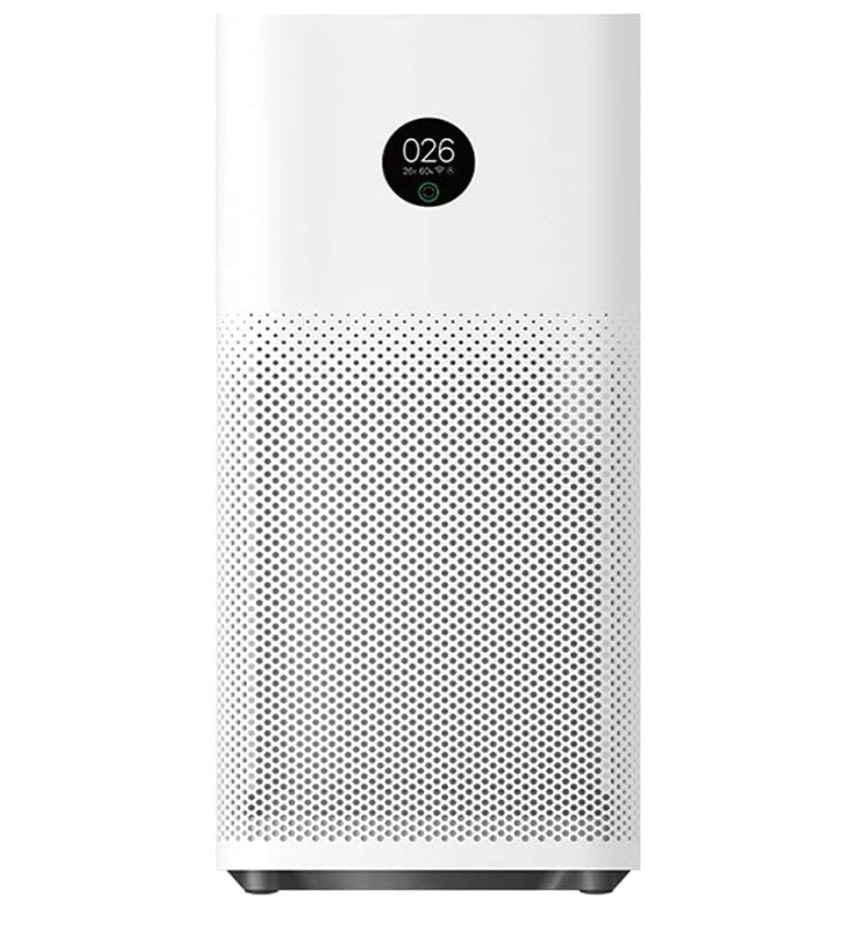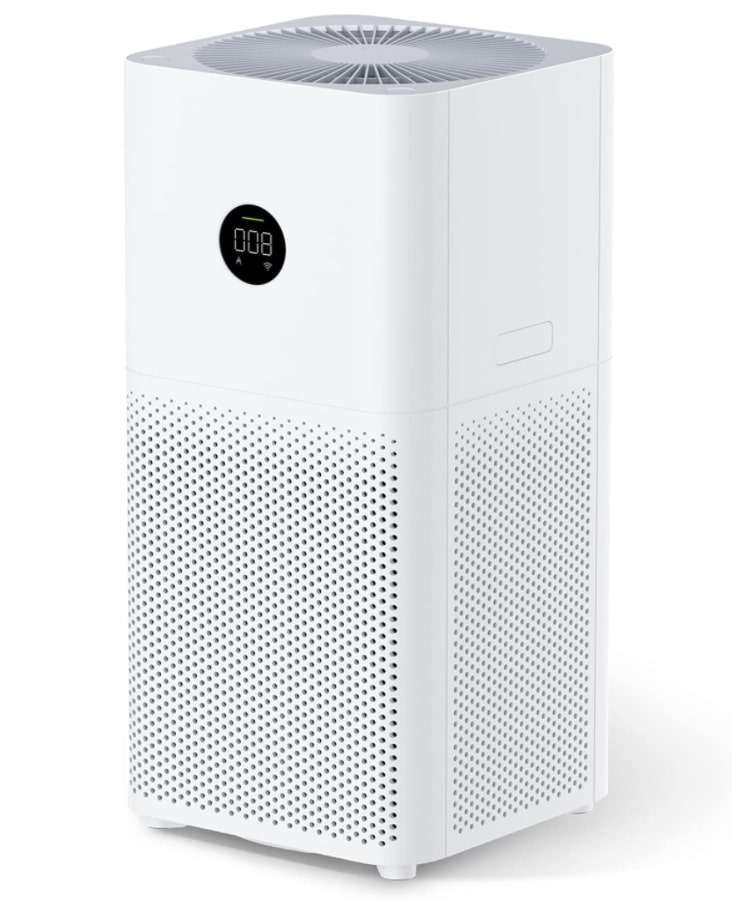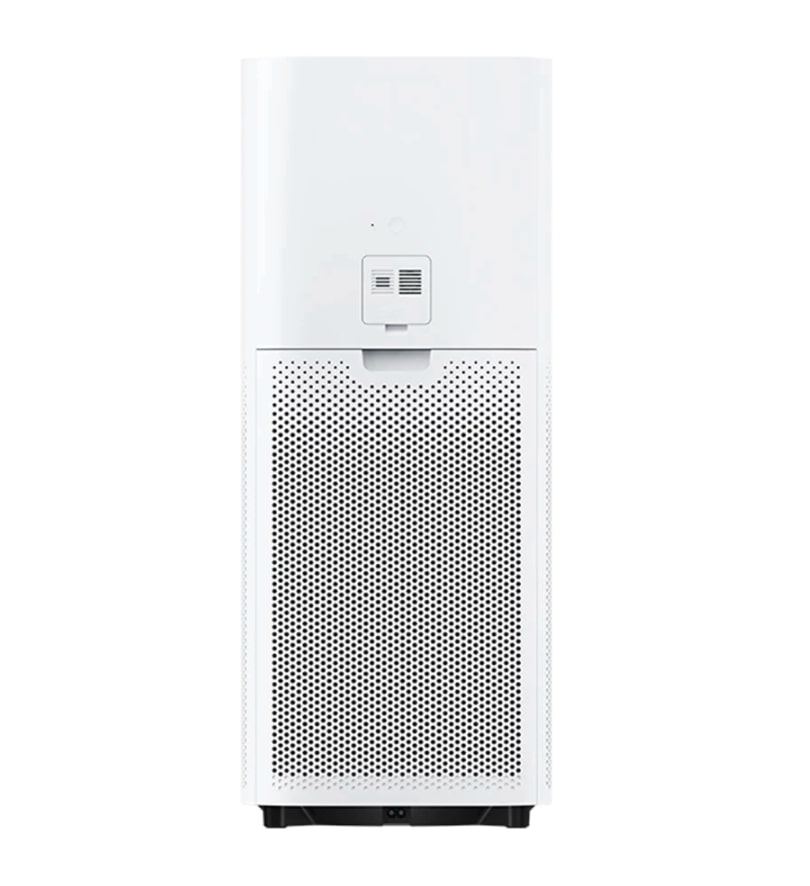Best Air Purifier for Allergies in 2025: Sterra or Xiaomi for Indian Families?
by Tim Blue on Nov 18, 2025

Are you struggling with allergies at home and searching for relief?
Finding the right air purifier can make all the difference, especially for Indian families facing dust, pollen, and pollution year-round.
In this quick guide, we’ll pit two leading brands, Sterra and Xiaomi against each other to reveal which air purifier truly stands out for battling allergies.
Whether you’re dealing with your city's smog or rural pollen, discover which model best suits your family’s needs.
Why is it a hassle to purchase the most authentic Xiaomi air purifiers online?
The USP of Xiaomi products is their low price. However, they offer high quality when compared to global premium brands. Top brands can hardly match Xiaomi’s feature-rich offerings over a wide gamut of consumer appliances. Their burgeoning sales figures often force their official sales channels to run out of stock.
According to Statista, the global air purification market is accelerating at a breakneck pace of about 10.5% CAGR to reach a revenue of USD 26 billion by 2022. Among those international players, Xiaomi is playing a significant role by tapping into the middle-class market worldwide.
This is why unscrupulous vendors jump to cash on Xiaomi’s popularity and push their cheap look-alikes through various online channels. This necessitates that the online shoppers be extra cautious to avoid pitfalls like buying a fake Xiaomi air purifier.
Best Xiaomi Air Purifier

Mi Air Purifier 3H
This is an integrated 3-layer nano-precision air purifier capable of cleaning a room measuring up to 484 square feet maximum off particle size as small as 300 nanometres while consuming a maximum of 38 W power.
Salient features:
- 99.97% removal of common pollutants by these three layers of filter media.
- Mesh pre-filter for large particles like hair, pet fur, dander, dust, dirt,
- High-Efficiency Particulate Air (HEPA) filter - for Particulate Matter smaller than 2.5 micrometers up to 0.3 micrometers (or 300 nanometres)
- Activated carbon layer for arresting smoke, odor, formaldehyde, VOCs, and other harmful gasses
- CADR (clean air delivery rate) of 13420 cubic feet per hour.
- Touchscreen OLED display, Alexa enabled.
- Ultra-low energy consumption of less than a unit (0.9 kWh) per 24 hours.
- Whisper quiet at sleep mode-noise level 33 dB only.
- The hi-speed laser PM sensor.
- It features an NXP NEC RFID tag for cartridge compatibility.
2. Mi Air Purifier 3C with Antibacterial HEPA filter cartridge

This is an excellent air purifier for slightly smaller rooms than those catered for by a 3H. It can be optionally fitted with an antibacterial HEPA filter cartridge for enhanced protection against bacteria thriving in a room
Salient features:
- 99.9% killing efficiency against bacteria
- Bacteria are intercepted, deprived of nutrients and inhibited, and finally killed.
- 67% elimination of dust mites.
- Quadruple filtration: mesh, antibacterial layer, standard HEPA, activated carbon
- Antibacterial cartridges can be replaced every year. However, the recommended replacement frequency is every 3–6 months. The mobile app reminds the user of the replacement.
- Most users give this purple color cartridge a rating of 5/5.
- The purifier is controlled by the Mi Home/Xiaomi Home app and AI voice control.
- CADR 11301 cubic feet per hour
- Ultra-low energy consumption of less than a unit (0.7 kWh) per 24 hours.
- Features NXP NEC RFID tag for cartridge compatibility
3. Mi Air Purifier 3 with Formaldehyde filter and HEPA cartridge

It is a powerful purifier with 400 cubic meters per hour PM CADR, fitted with the Green colored anti-formaldehyde filter cartridge. This model was the successor to the Mi Air Purifier 2S.
Salient features:
- A4 paper-size footprint
- 6660 liters per minute clean air supply
- The hi-speed laser PM sensor
- Backlit centrifugal fan with brushless motor
- Pressurized inner channel
- A cylindrical bucket cartridge gives a 360-degree filter surface.
- The activated carbon layer removes formaldehyde and chemicals like TVOC, ammonia, radon, trimethylamine, methanethiol, hydrogen sulfide, ethane, 3-methylindole, and indole.
- Weight 4.8 kg
- The large intake grille area
Xiaomi Air Purifier 4 Pro
This is the current offering from the fabled Mi stable, which features a whopping 8330 liters per minute of clean air supply.
Salient features:
- Model no. AC-M15-SC
- Rated power 50W
- Noise level <=64 dB (A); < 33.4 dB on sleep mode
- Coverable room area 35-60 square meters
- Weight~ 6.8 kg
- Prevent 99.99% dispersion of viruses
- PM2.5- PM10 - detection of coarse particles such as pollen
- PM2.5 - detection of fine particles
- PM2.5/PM10 dual-effect laser sensor
- Intuitive color-coded OLED display
- Negative air ionization for preventing stale air
- Hi-quality activated carbon media removes formaldehyde and toluene
Are Xiaomi filters really effective?
- Mi air purifiers 3 series is quite an improvement over its predecessor. Graduating from a previous EPA cartridge to a True HEPA H13 cartridge was a significant jump with a claimed efficiency of up to 99.97% in eliminating up to 0.3 nanometres particles.
- Experiment with series three has shown that running the purifier for about 45 minutes in an ample unsealed space has improved the AQI to 60-70 PM2.5 mark, which is commendable for an equivalent value of 250+ without the purifier.
- If compared with brands like BlueAir or Honeywell, it may not shine that bright, but you have to remember the value offered at almost half the cost of the premium brands and judge its worthiness in that perspective.
What is the average user review regarding different Xiaomi air purifier filters?
- According to the Amazon.com global marketplace, the user reviews and ratings for the Xiaomi air purifier 3C model is quite commendable. With more than 63% of 5 star ratings and 10% of 4 star ratings, people have rained plaudits on the Amazon product page for the particular Xiaomi air purifier models.
People suffering from airborne allergens like pollen and dander have confessed candidly how they have benefited immensely from these affordable yet state-of-the-art gadgets. They have also praised the 3C model for being super quiet and delivering clean air ultra fast from power on.
- AliExpress returns an average customer rating of 4.5 out of 5 for the Mi air purifier three series.
Xiaomi Air Purifiers are thus intelligently designed gadgets that cover most consumer demands and expectations out of such a domestic product. There are models to suit most requirements of consumers concerning known pollutants of particulate or gas nature.
App and voice control, low specific energy consumption, and good enough cartridge life place Mi air purifiers in a respectable position in the market.
Given below a list of popular air purifier filters available in the market:
1. HEPA filters
It’s a pleated mechanical filter generally made up of fiberglass or filter paper. The acronym HEPA stands for High-Efficiency Particulate Arrestance - officially defined by the US Department of Energy.
These filters are theoretically capable of filtering dust, dander, pet hair, pollen, fungi, bacteria, and even viruses (up to 300 nanometres in size) with a minimum efficiency of 99.97%.
However, the Coronavirus variants measuring approximately 50-140 nanometres are beyond the removal capacity of such filters.
HEPA filters are graded as H10 to H14 based upon their percentage efficiency of interception. These H values are of European gradation, equivalent to a MERV (Minimum Efficiency Reporting Value) scale in the US. Hence, H13 and H14 grade HEPA are equivalent to US MERV of 17 and 18, respectively. A medical-grade H14 HEPA filter allows 0.005% of 0.1-micrometer particles per liter of air to pass through it.
Pros:
- As their name suggests, they offer high efficiency of filtration. However, buyers must steer clear of filters named ‘HEPA-type’ or ‘HEPA-like,’ which are not HEPA filters.
- Clean Rooms and Electronic Assembly get benefits from using medical-grade HEPA.
Cons:
- Mold can thrive when suspended over a HEPA filter surface and release spores.
- Dying bacteria on the HEPA surface can release endotoxins in the incoming air.
- Not effective in arresting viruses below 0.3 micrometers (300 nm) size
2. Carbon filters
Carbon was long known for removing gangue or impurities from metallic ores, such as smelting bronze. But that was as a reducing agent. There was also a practice of smearing waterpots with charcoal to keep water fresh for a long time.
It started to be known for air filtration after the Activation of carbon, or charcoal technique, was invented. Charcoal is ‘activated’ when injected with hot air or carbon dioxide, thereby creating tiny pores into it, increasing its surface area manifold, and inculcating a property called “adsorption” into it.
Activated carbon filters thus ‘adsorb’ tiny gas molecules in them and strip the air passing through them off unwanted glasses causing odor, VOCs or volatile organic compounds, smoke, etc.
While adsorbing chemical pollutants for a specific time, the pores of adsorbing carbon get filled, which inhibits further adsorption and may cause the release of the adsorbed gases in conditions dependent on ambient temperature and humidity. This might cause odor pollution from the carbon filter and is the only indicator of when a replacement is due.
Activated carbon media find wide application in water and air purifiers alike for their unique property of gas adsorption. Most consumer and commercial air purifiers on the market happen to have this filter media.
Pros:
- Able to remove smoke, like cigarette smoke or fumes leaked from a kitchen chimney, fumes of drying paints, fumes from cleaning agents, benzene, xylene, and certain chlorinated compounds
- Able to remove odors that mechanical filters cannot. You can expect not to smell frying fish having installed an air purifier that sports carbon filtration.
Cons:
- Cannot filter the particulate matter
- Replacement is expensive
- There is no way to know when the filter bed is entirely spent and the time of replacement
3. Prefilters
Air pre-filters or mesh filters, as they are more commonly known, are cartridges or media designed to arrest large pollutant particles like dust, dirt, pollen, dander, pet, human hair, etc.
They serve the dual purpose of capturing larger particles, thereby reducing the load on a downstream HEPA filter and extending its life as a result. Pre-filters safeguard all of their downstream filter media.
They are generally made up of monofilament nylon/polyester/stainless steel wires, main weave/twill weave/dutch weaved to a 5 to 420 mesh/inch size normally.
For consumer air purifiers, such air pre-filters are typically made in Basket or Panel form suitably supported by PVC/metal frames.
Pros:
- Sieves out significant pollutants that can impede or shorten the life of expensive, main filtration media
- Easy to clean and cheap to replace compared to a much more expensive HEPA cartridge
Cons:
- None in particular except for adding a little extra width/volume of the central air purifier body.
4. Permanent filters
They come with reusable, washable, or vacuumable filter media and are generally expensive compared to Air Purifiers that use disposable cartridge filter media. Most of them feature permanent HEPA filters.
Products like Winix 5500-2, Honeywell HFD 120-Q, Envion Therapure TPP240 are permanent air filters with washable cartridges. Permanent HEPA filters need replacement every 8-10 years if cleaned at the prescribed frequency of 30-90 days.
Pros:
- No botheration of frequent replacement of filter media
Cons:
- Mostly bulky and expensive
- Does Xiaomi Air Purifier use real HEPA filters?
Yes. Mi Air Purifier 3H sports an H13 authentic HEPA filter that comes in a basket shape offering filtration on a 360-degree cylindrical surface.
- How long does a Xiaomi Air Purifier 3H filter cartridge last?
The age of the Xiaomi 3H filter cartridge is ideally 6-12 months, depending upon the pollution load of the area of use and the sealing quality of the room concerned. Many people remove surface clogging of the cartridge side surface manually or use a vacuum cleaner to extend cartridge life partially.
However, the onboard display may not change to show a better remaining life when tried after such cleaning, but evidently, it improves the working of the purifier before the replacement of the cartridge.
- Where should I ideally place my Mi Air Purifier for best results?
The working efficiency of the Mi Air Purifier can be boosted by nearly 20% by placing it at the correct position - behind a TV stand or at a room corner, even resulting in a 50% loss of the purifier capacity.
Consider the following to identify issues and resolve them.
- Put it at known problematic zones - where you smell the oil fumes, get exposed to passive smoking, mold-infested surface/wall.
- Keep it 3-5 feet off the ground by exposing it to horizontal and vertical air movement inside the room.
- Keep near high airflow zones, like windows or doorsdoor.
- Don’t keep it inside a kitchen or a bathroom.
- Avoid placing near electronic gadgets like TV, microwaves to avoid any possible electromagnetic induction waves.





